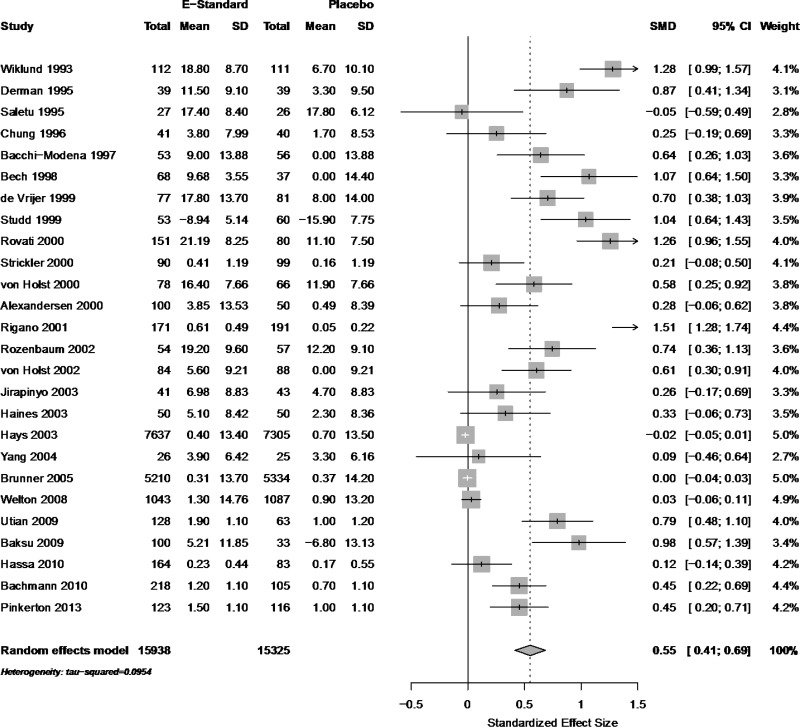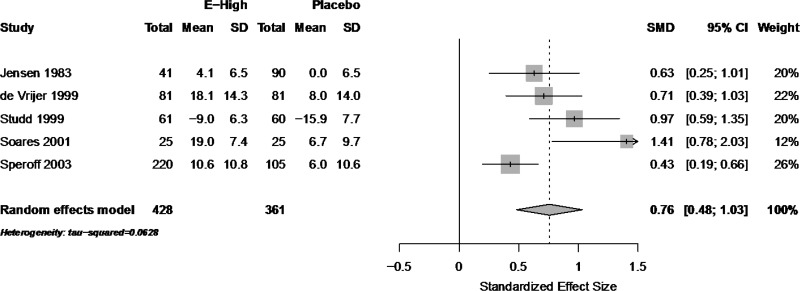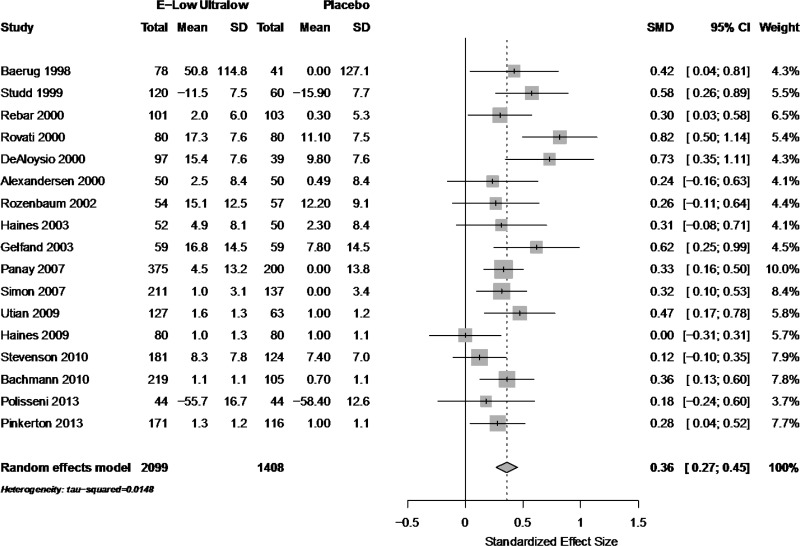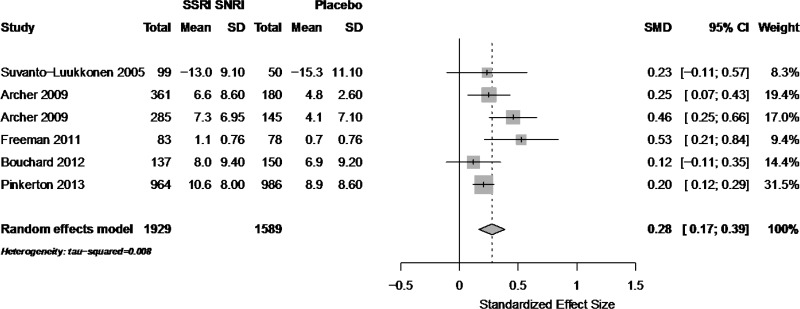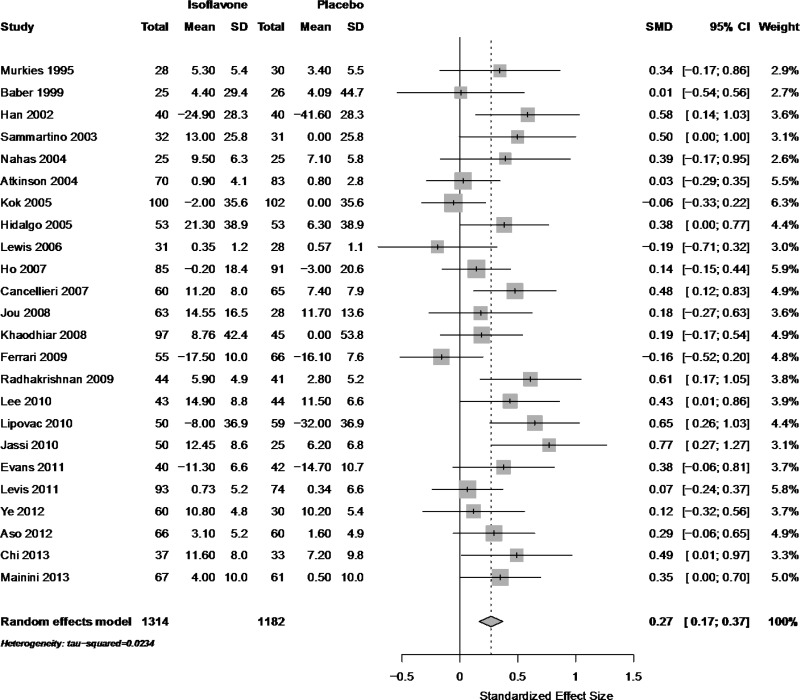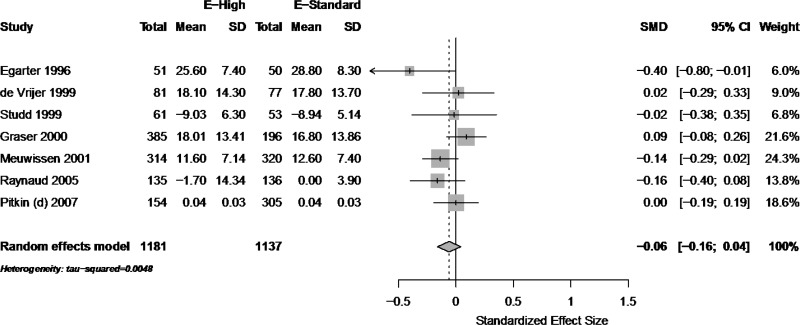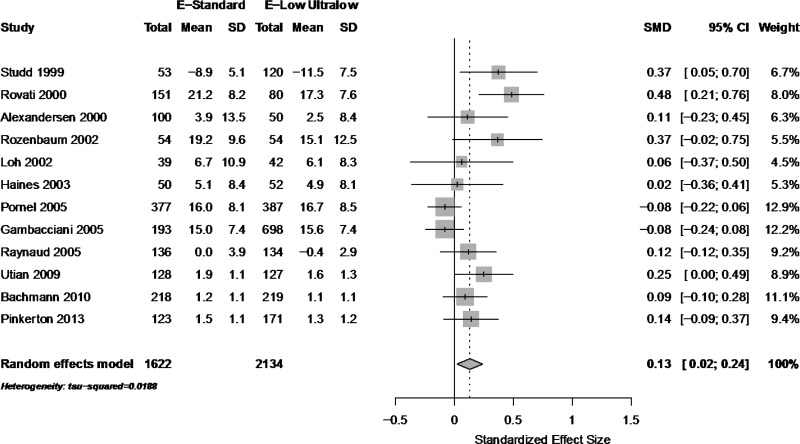NCBI Bookshelf. A service of the National Library of Medicine, National Institutes of Health.
Grant MD, Marbella A, Wang AT, et al. Menopausal Symptoms: Comparative Effectiveness of Therapies [Internet]. Rockville (MD): Agency for Healthcare Research and Quality (US); 2015 Mar. (Comparative Effectiveness Reviews, No. 147.)
Figures
Tables
Table G-1Network analysis excluding trials utilizing general quality of life instruments (SMDs and 95% credible intervals)
| E-High | |||||||
| -0.01 (-0.21 to 0.19) | E-Standard | ||||||
| 0.15 (-0.07 to 0.37) | 0.16 (0.01 to 0.31) | E-Low/Ultralow | |||||
| 0.27 (-0.06 to 0.59) | 0.28 (0.00 to 0.55) | 0.12 (-0.16 to 0.40) | SSRI/SNRI | ||||
| 0.25 (-0.01 to 0.50) | 0.26 (0.07 to 0.45) | 0.10 (-0.11 to 0.31) | -0.02 (-0.31 to 0.27) | Isoflavone | |||
| 0.36 (0.01 to 0.72) | 0.37 (0.06 to 0.69) | 0.21 (-0.11 to 0.54) | 0.09 (-0.29 to 0.48) | 0.11 (-0.22 to 0.45) | Black Cohosh | ||
| 0.27 (-0.23 to 0.78) | 0.29 (-0.19 to 0.77) | 0.13 (-0.36 to 0.61) | 0.01 (-0.52 to 0.53) | 0.03 (-0.46 to 0.51) | -0.08 (-0.64 to 0.46) | Ginseng | |
| 0.56 (0.35 to 0.77) | 0.57 (0.46 to 0.69) | 0.41 (0.27 to 0.55) | 0.29 (0.04 to 0.54) | 0.31 (0.16 to 0.47) | 0.20 (-0.10 to 0.50) | 0.29 (-0.18 to 0.75) | Placebo |
Table G-2Quality-of-life rankings of comparative efficacy excluding trials utilizing general quality of life instruments, standard deviations, and 95% credible intervals (integer values because they arise from a distribution of integers)
| Treatment | Mean Rank | SD | 95% CrI |
|---|---|---|---|
| E-High | 1.9 | 1.0 | (1 to 4) |
| E-Standard | 1.6 | 0.7 | (1 to 3) |
| E-Low/Ultralow | 3.7 | 1.0 | (2 to 6) |
| SSRI/SNRI | 5.1 | 1.4 | (2 to 7) |
| Isoflavones | 5.0 | 1.1 | (3 to 7) |
| Black Cohosh | 6.0 | 1.4 | (3 to 8) |
| Ginseng | 5.0 | 2.1 | (1 to 8) |
| Placebo | 7.8 | 0.4 | (7 to 8) |
SD: standard deviation; CrI: credible interval; E: estrogen; SSRI: selective serotonin reuptake inhibitor; SNRI: serotonin and norepinephrine reuptake inhibitor.
